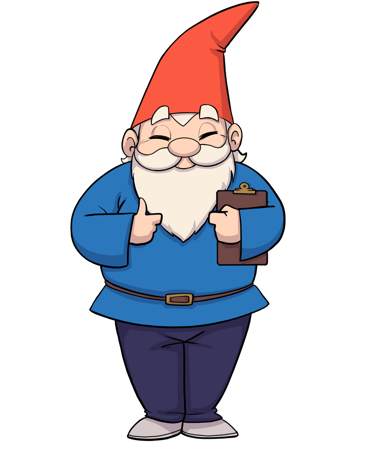Alex Baird joined FuturLab in November 2023 as a UI Artist, working alongside our Senior UI Artist in a two-person UI team. With a decade of experience, Alex works on all things PowerWash Simulator 2 and have ownership over all the UI/UX elements being developed for it. Aspiring to go into UI or Game Design, Alex moved to London and began working at Rocksteady studios where they were able to learn from the UI artists there via lunchtime mentoring and skills sessions. Alex decided that UI was the path for them, and worked as a UI Artist at Splash Damage before joining FuturLab. They work on all things PowerWash Simulator 2 and have ownership over all the UI/UX elements being developed for it.
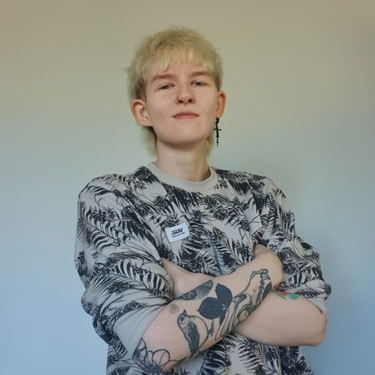
How did you get into the games industry?
“People always say I look younger than I am, but I’ve been industry since I was 18 which is a decade now!
“I went to Abertay University in Dundee which is pretty well known for its games courses and I did a degree called Game Design and Production Management.
“So I learnt a lot about game design, UX design, production and the business side of games, while trying out every sort of discipline. I knew I wanted to do something creative, and games are so complex with their visual, auditory, interactive and storytelling elements."
For any newbies out there, what is the difference between UI and UX?
“It’s a big one people talk about! UI is the user interface of a game, so that tends to be the more visual elements that you see like the colours, shapes, fonts etc.
“Meanwhile, UX is the user experience that is applied to the UI. It’s a bit harder to quantify and it links with areas of like game design and product design, but it’s more about the feeling when you interact with something. So it’s more about the behavioural and psychological element of the interaction.
“You could have beautiful UI but with poor UX where you have to navigate the same tedious process over and over again or endless menus which is annoying – but it could look beautiful while you’re doing it! Or you could have something that doesn’t look great, but functionally it feels really good to interact with and is very seamless.”
How did you get your first UI/UX job?
“In my spare time I started building up a portfolio so I could move out of QA and get into UI. I focused on redoing the UI of existing games. I started to look at games I enjoyed and used the skills I had been developing to see how I could improve elements of the UI/UX. It really helped me build that critical understanding of what is good, what is bad, what works, what doesn't work and what it takes to apply that to something you're making.
“Reworking existing UI also helped to demonstrate I could emulate specific styles of those existing games – this helped me show how I could adapt to existing standards and styles; it’s really helpful as a portfolio piece!
“That’s a skill I’ve used here at FuturLab: the UI/UX for PowerWash Simulator 2 has to build on the style that was established in PowerWash Simulator – players need to be able to look at it and see that the game is part of the IP, but also feel that there’s been an improvement in the visual style and user experience.”
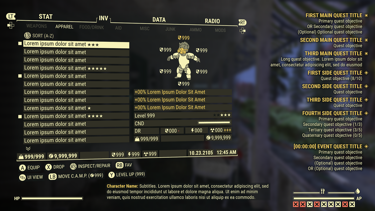
For their portfolio and learning, Alex redesigned Fallout 76’s menu system to improve information parsing, layout redesign so more information can be seen on one screen, including keeping subtitles visible.
How did you hear about FuturLab? What made you apply?
“I played maybe 100 hours of PowerWash Simulator! I was ready for a new role so I was looking around and when I saw FuturLab I was like ‘oh, that’s the PowerWash Sim people’!”
Did you always want to work in the games industry? You seemed very set on it with your degree and then all your work experience!
“I actually really got into the idea of making games when I was playing the original Oblivion years ago on PC! It was around the age where I needed to figure out what I wanted to do with my life, and while playing I spent so much time essentially QAing things and playing with console commands - just trying to figure out how things worked through how they could be broken.
“It was my first open-world game of that scale, so I was pushing the limits and when I finally got a good PC and discovered console commands I realised how much there was to play around. I started looking into how people even make games because there’s so much that goes into it. I was fascinated by it and just needed to know how it all worked.”
Can you explain the typical UI/UX process?
“Let's say I'm given an inventory screen that I need to create. First, we would have a discussion with the Design team about what the expected functionality is and explore how the player would interact with the feature, and what we want the player to get out of it. We might also discuss and look and examples from other games, to explore what has been done well (or not so well!)
“Then I’ll scurry away and start to make some wireframes which, are very basic grey boxes to show the general layout of where to expect the information to go, what interactions we expect etc. I might do three or so general layout ideas and then I’ll usually choose one of those to iterate more on and map out the specific details like spacing and niche interactions and edge cases. I’ll then go back to design to walk through the idea and how we expect it to work, and if they have feedback then we’d repeat the process and iterate on things.
“When we’re happy with it, we start adding in the art and also talk to the Programming team to discuss how to approach implementing it, any specific functionality or interactions with other screens and so on.
“When it's in engine and Design are happy, we make sure that QA has the information they need to begin testing it when everything’s implemented. Then it gets final polish like the materials, textures, padding and spacing and it will be tested to make sure it’s all working as it should.”
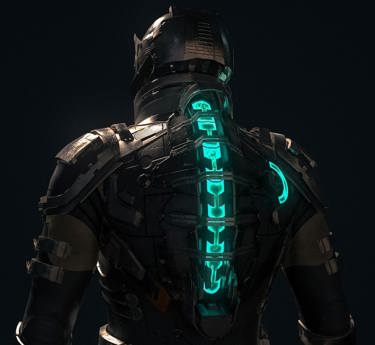
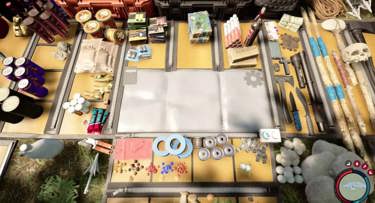
Examples of some of Alex's favourite innovative UI Design:
The character’s health bar in Dead Space (left) and the diegetic inventory in The Forest/Sons of the Forest (right)
What’s been your favourite part of working on PowerWash Simulator 2 so far?
“It’s been interesting coming to FuturLab as a consumer of PowerWash Simulator, as I’ve been able to bring in my own opinions of what I did and didn’t enjoy about the UI/UX while I was playing it and be part of improving on that.”
What is something a lot of people misunderstand about your role?
“I love UI, but I think there's a very common thing where people really underestimate how much work goes into it.
“People think UI is just buttons and menus and that it can’t be that much work really, but there’s a lot more to it than people expect. A lot goes into creating an intuitive experience for the player – it's part visual art, part interaction design – plus there’s the whole implementation side which people often don’t consider much. Working with complex game logic to make sure everything functions and is presented correctly, ensuring iconography and text is localised and legible, ensuring we meet platform requirements, etc. A lot goes into making sure the player can easily and quickly interact with complex systems through the user interface.
“I think it stems from the job title sometimes, there isn’t really a standard title across the industry that helps demonstrate the UI, UX and design aspects of the role.”
What advice would you give to someone who is interested in getting into UI/UX design?
“There’s so much information online – YouTube tutorials and Discord groups can be a big help! You can also get access to a lot of industry-standard tools either cheaply or with free trials, to apply what you learn and experiment with things.
“ I think like the best way to kind of learn this kind of thing is to be practical: just start doing it. Do something that interests you so it doesn’t feel like work - maybe take a favourite game and look at ways you can improve it, make mock-ups or remake it in Unreal or Unity. Employers like to see that kind of practical work, it shows you’re analysing and understand the role.
“Media literacy in games is really helpful too, so make sure you know about the industry you’re interested in! Play games, analyse the choices the developers have made, think about what the pain points are and how you might be able to improve them.”
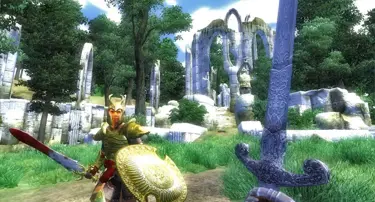
The Elder Scrolls IV: Oblivion (2006), Alex’s first RPG and reason they got interested in how games were made
Have you ever considered any other industry or is it just like games has always been the one?
“I have quite a lot of tattoos, so I considered that for a while. But I realised I didn’t have the social battery to sit with people all day every day. I also didn’t love the idea of the hygiene factor of dealing with skin, blood and smells all day!”
If you weren’t doing your current role at FuturLab, what do you think you’d be doing?
“You know what? If I wasn't at FuturLab at the moment, I think I might take a break and work on my own things.
“I’m quite bad at giving myself a break – I’ve never givne myself much time between roles, and I can kind of feel the accumulation of that. I’m also really bad at taking my holidays! So, I think I would force myself to have a break. I’d like to work on my own game project, but also spend more time on doing other things that bring me joy and creative stimulation.
“I’m quite good now with timekeeping and I go to the gym every morning and do my hobbies in the evening and weekends. So, I’d probably keep the same working hours and routine, but just do something for myself!”
Thank you Alex for sharing this with us! More FuturLab Features will be coming soon. To keep up to date with the latest FuturLab game and studio news, please subscribe to our newsletter.
